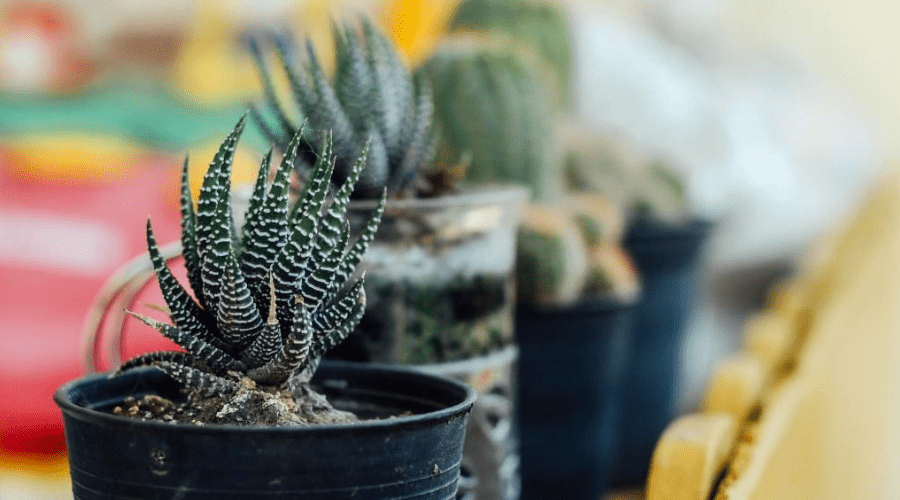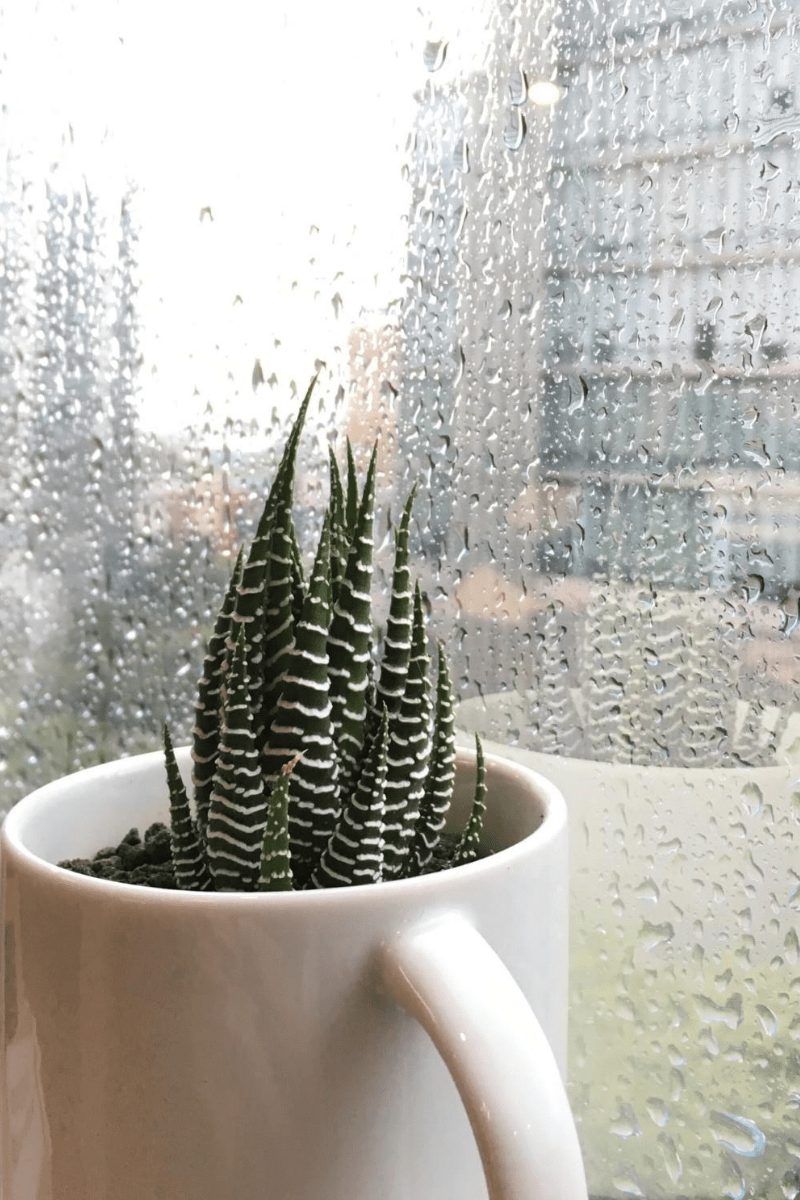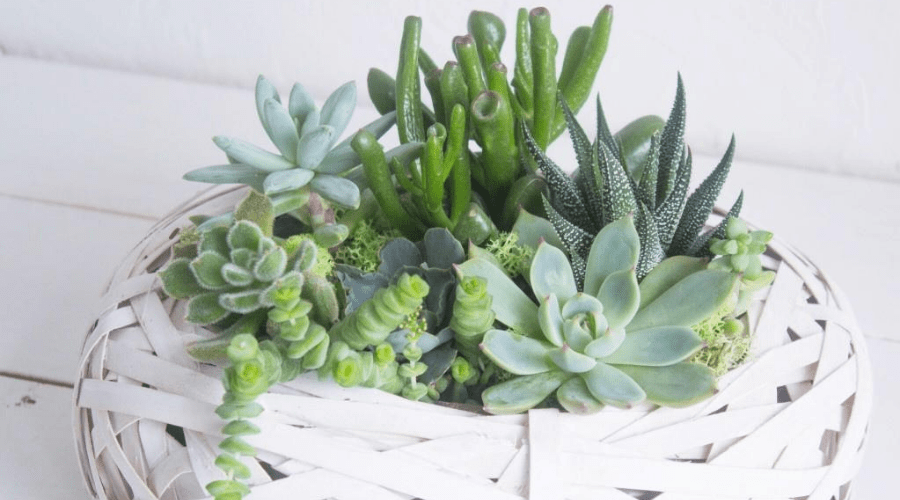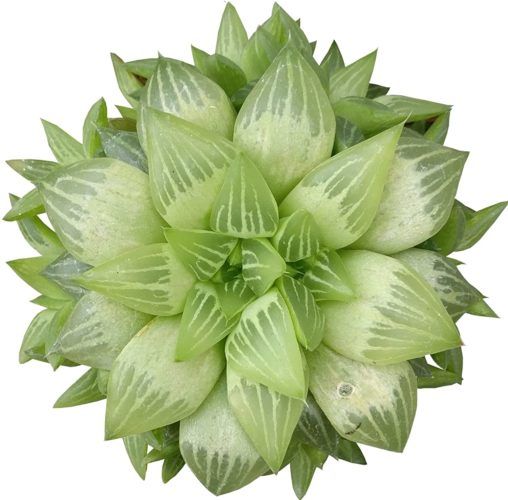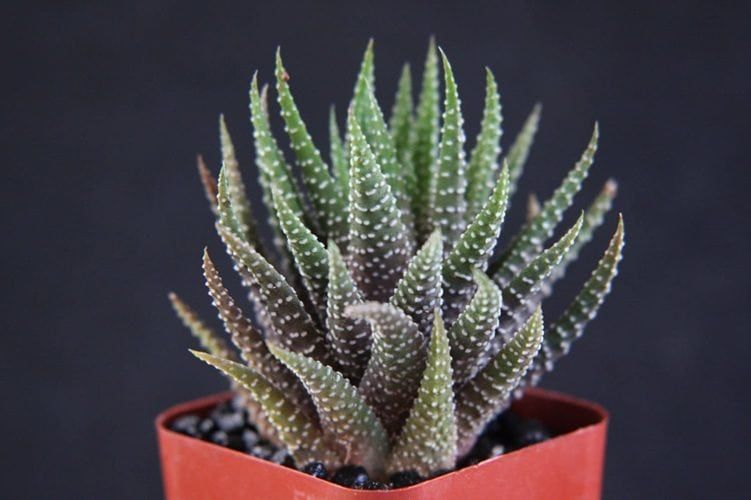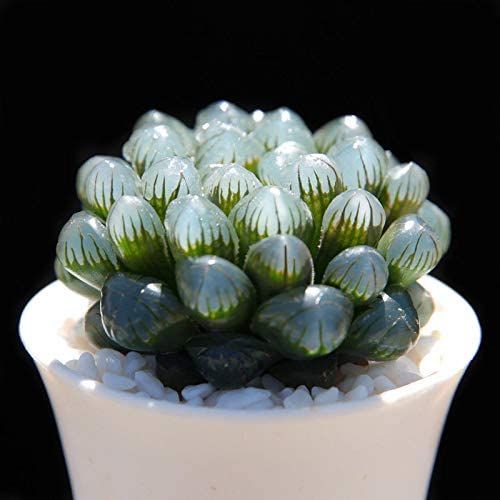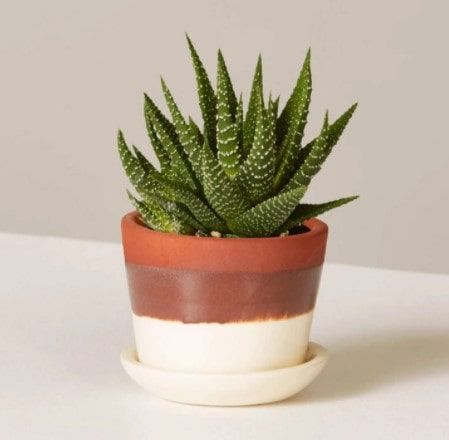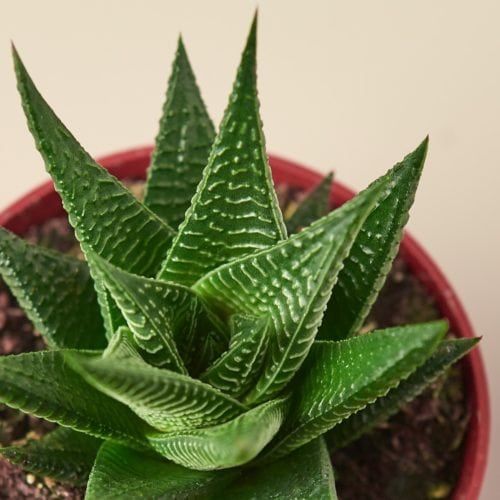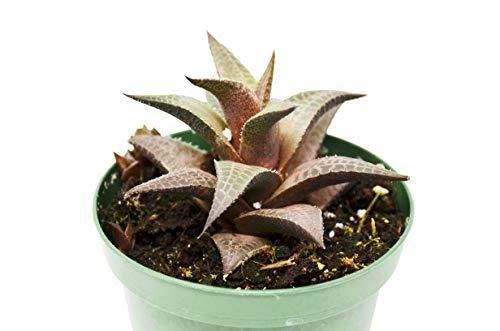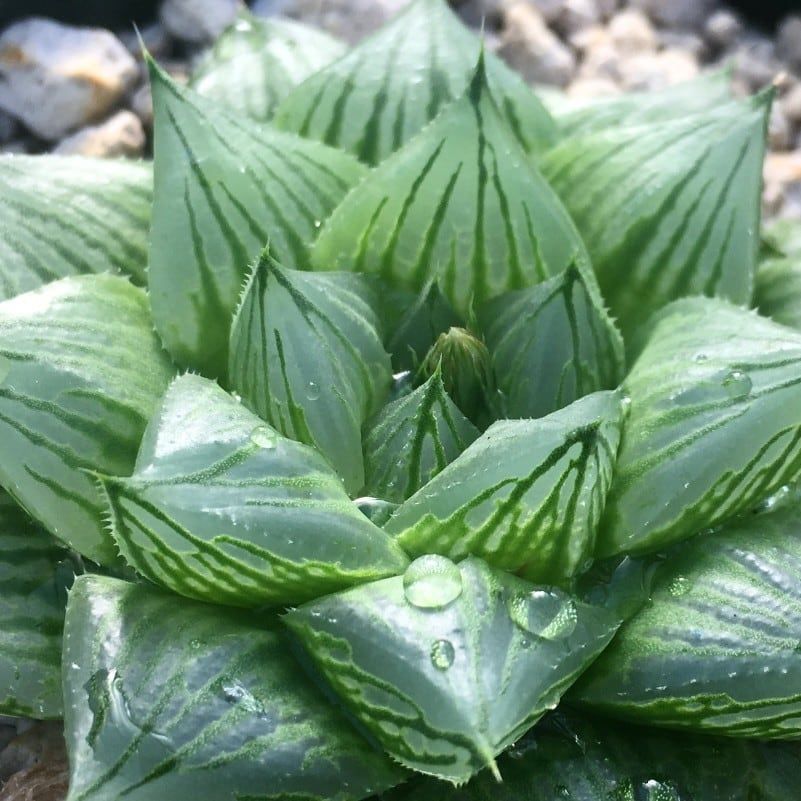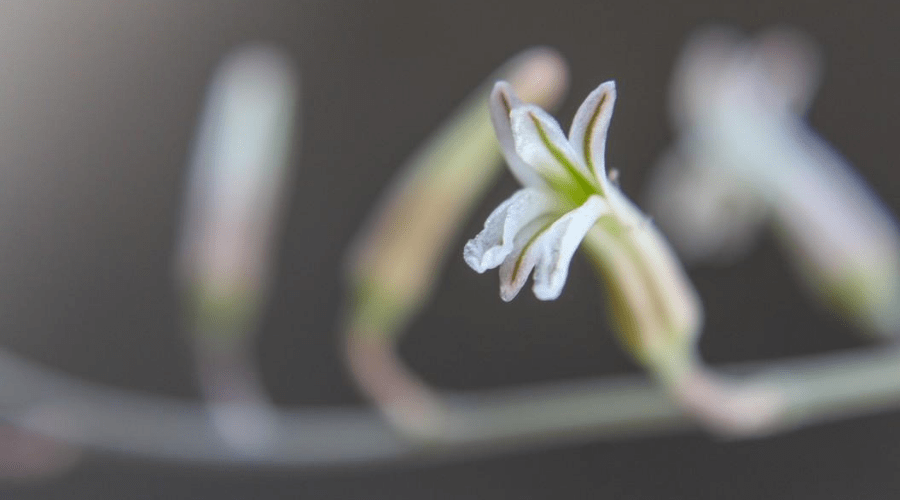Succulents make great houseplants for new plant enthusiasts and practiced indoor gardeners alike, and now there are more places to find a variety of succulents than ever before. Few plants are as low-maintenance and interesting as the spiny-textured, sometimes translucent Haworthia, as long as you keep a few growing instructions in mind. This comprehensive guide includes watering, fertilizing, light needs, propagation, pest control and other care guidelines.
Haworthia Details
Haworthia spp.
AKA Cushion aloe, zebra cactus, star window plant, pearl plant
Ease of Care: easy
Light: bright indirect sunlight
Water: when soil is dry
Temperature: >50° F
Height: 3 - 5 inches
Growth Rate: very slow
Pests: scale, mealybugs
Diseases: root rot
Toxicity: nontoxic
Benefits of Growing Haworthia
Haworthia is one of the easiest succulents to grow. In fact, it is ranked to have the same “difficulty” of care as the aloe vera plant. A lot of people choose to grow this plant because of its really small size which makes great use of a wide variety of adorable little containers. It is not rare to see the plant growing in cute teacups or other recipients different from your average planter (if you check out Pinterest, you will discover a whole new world of ideas on how to pot your Haworthia).
Haworthia Care
Since this plant has some pretty basic care rules, here is what you should know if you plan on growing your own:
Light
As with other succulents, this plant is a bright light lover and you must avoid placing it in direct sunlight. As far as their native habitat is concerned, Haworthias will often grow in shades of objects such as rocks. If you have a window facing west or east, that’s the best place for this particular plant.
If you notice that the plant’s leaves are starting to turn yellow or white, that means it’s getting too much sun exposure. On the other hand, not getting enough light will cause the vivid green color of the plant to fade away.
Those of you that grow the plant indoors and plan on moving it outside during the warmer seasons should know that the Haworthia requires gradual light exposure, with more and more light every day. Otherwise, there are high chances of burning the plant’s leaves.
Soil
Cactus mix is one of the best choices in terms of soil. There are gardening enthusiasts that argue over the addition of sand to the potting mix, as they claim sand isn’t that great at draining.
Water
Because this is a succulent, it is way better to underwater it than over water it. You can allow the soil to dry out between two watering, as the plant is really sensitive to damp soil. During the colder seasons, you can water it even once every two months. Whatever you do, make sure that there is no water sitting in the rosette.
The good news is that the plant doesn’t need any humidity, which is often a problem with other (tropical) houseplants where you have to push them to survive in dry indoor air.
Temperature
As far as temperatures are concerned, the Haworthia plant can survive in anything above 50 degrees Fahrenheit. It does love summer warmth and will suffer if temperatures ever fall lower than 40 degrees.
Venting
Aside from over watering, there is one more thing that demands your attention when it comes to growing this plant, and that is proper ventilation. During the night, a Haworthia needs ventilation for photosynthesis and if your natural indoor habitat can’t provide that, you will need to supplement this loss with a fan.
Fertilizer
If cactus soil does the trick for this plant, then so will cactus fertilizer. Take note that you never have to feed the plant during the winter.
Haworthia Propagation
Unlike other succulents, Haworthia has three different methods of propagation. You can choose between leaf-cutting, offset division, and seed propagation. Each of these propagation methods has its ups and down but you can choose whatever method is available to you.
By Seed
As far as seed propagation is concerned, you will either have to buy the seeds or take them from your blooming Haworthia (presuming that you have one). With this method, it is important that you soak the seed to make sure they have a soft coat (leaving the seeds for about half an hour in water should suffice). You can use warm water in the process. When you’re ready, you can add cactus soil mixture into the pot and then place a few seeds inside as well. Cover the seeds with a thin layer of small gravel or sand and moisten the soil. To give your seeds a growth boost, you can place the pot in a plastic bag and then move it to a place with bright and indirect sunlight. Since this is a slow-growing plant, make sure you don’t transplant it at the first sign of sprouting.
By Cutting
Leaf-cutting propagation requires you to have a healthy plant in order to start growing a new one. If you opt for this propagation method, you should do it when the plant is no longer dormant, right before the growing season begins. Cut off a healthy young leaf and place the cut edge in rooting hormone. Set the leaf aside to dry for a few days, allowing the cut to heal. When ready, place the leaf in a pot with cactus potting mix and add water. Put the container in a spot where it can get some bright and indirect sunlight. During the next period, the soil has to be moist. It will take a few weeks before the root system starts forming. Only then can you proceed with transplanting the plant.
By Division
Offset division needs a plant with upside shoots. The best time to proceed with this method of propagation is during spring or fall. You have to make a cut as close to the parent plant as possible and whilst including as many roots as possible. When you repot, make sure you don’t water the plant during the first few days.
Regardless of the method chosen, you will need the same time of potting soil, which is either cactus soil or a homemade combination of one-third potting soil and two-thirds perlite, crushed lava rock, or sand. During the watering process, it is recommended that you avoid water with chlorine.
Varieties of Haworthia
One of the reasons the Haworthia plant became one of the most popular choices in terms of household succulents is because of the wide varieties that take different forms, all of which are very aesthetically pleasing. Even if almost all Haworthias have a rosette shape (in fact, the only exception to this rule if the Haworthia Truncata), there are several details that make this plant’s varieties so different from one another.
It is true that experts haven’t completely agreed on what makes a succulent a Haworthia; there are believed to be about 150 different varieties to this plant. Some of the most popular include Windows, Venosa, Cooperi, Silver, Zebra, and Batesiana.
Purchasing
Luckily, the Haworthia plant is a succulent that’s very easy to find both offline and in online shops. Amazon is also a great shopping resource, as the platform offers a wider variety of Haworthia plants:
Live Window Haworthia Succulent
Haworthia cuspidata is a rosette forming succulent, with rosettes up to 4 inches across. The leaves are lime green to greenish-grey, wedge-shaped, pointed at the tip, with darker green glassy “windowed” translucent areas near tips.
Haworthia Fasciata Attenuata (2-Inch Pot)
This beautiful healthy plant is easy to keep but very difficult to find. This is a very nice choice for a succulents gardens.
Haworthia Cherry Plant (Cooperii Baker)
Another windowed variety, cooperii Baker has a rosy, purplish color in sunlight and the plump leaves are quite round, hence the common name of Cherry Plant.
If you want an authentic Haworthia Zebra, you can find an excellent specimen on The Sill.
Mini Haworthia Zebra in Custom Planter
Marked by ridges with bright white stripes, it’s the zebra of the plant world. A drought tolerant succulent, the Haworthia survives on little more than sunshine, and the occasional watering.
House Plant Shop offers interesting varieties as well, and seems always to have good stock on hand.
Fairy Washboard Haworthia
Haworthia Limifolia are charming, compact succulent plants. It rarely exceeds four inches in a potted container, making it the perfect addition to a window sill or desk.
Haworthia 'Venosa' Succulent
Haworthia Venosa have plump, curved spines and a rosy cast. They're spinier than Windows Haworthia, less spiky than Haworthia Zebra, and more closely resemble an aloe in the shape and size of their leaves.
Pests & Diseases
Much like other succulents, the Haworthia stays true to its nature and can potentially attract the pests and diseases that are common to similar specials. In terms of pests, the plant might be able to show signs of mealybugs, scale, or weevils’ infestation.
As for the diseases specific to the plant, they are mostly a consequence of improper care. Root rot is the most frequent of all and it occurs when the plant is being over watered and the roots are laying in damp soil. While common, root rot can lead to plant perish, so if you suspect its existence, you need to remove the plant from the pot, remove any rotten rots, and repot.
Potting
One of the benefits of having a Haworthia is the fact that it doesn’t grow very big, which makes potting and repotting less of a hassle. The plant itself is slow-growing, in clusters that eventually enlarge over time. When you notice that a cluster has grown too big for its container, you can take advantage of the start of the warm season to repot the plant.
For repotting, you can use a shallow and wide container. Make sure that you also use fresh new potting soil. Should you wish to propagate the plant, it would be wise to take advantage of potting to do so.
Common Questions
How big does Haworthia grow?
Fortunately, a Haworthia plant doesn’t usually outgrow 5 inches in height. We said “fortunately” because it is precisely this small size that makes the plant so versatile and adorable. This plant is often grown in a variety of untraditional containers, from teacups to baby shoes.
Is Haworthia poisonous to pets?
Even if this succulent is often associated with the popular aloe vera plant (which is considered toxic), the Haworthia is safe for both cats and dogs. It is also non-toxic to humans but, even so, all the aforementioned categories should avoid ingesting it because they can cause gastrointestinal discomfort.
Why is my Haworthia turning brown?
One of the best parts about having a houseplant is that, if you pay close attention, the plant will tell you what is needs. For instance, if you notice that the leaves on your Haworthia are turning brown, this is a sign that the plant should be moved away from direct sunlight.
Does Haworthia make flowers?
The flowers of Haworthia varieties only last for a few days, while the blooming process is extended over a period of several weeks. If you want to expand the blooming period, you will have to make sure that your Haworthia is getting a steady supply of fertilizer. Often times, flowers are a result of a successful dormancy period, so make sure you give the plant what it needs during the winter.

